When the circus was the No. 1 attraction
The Detroit News
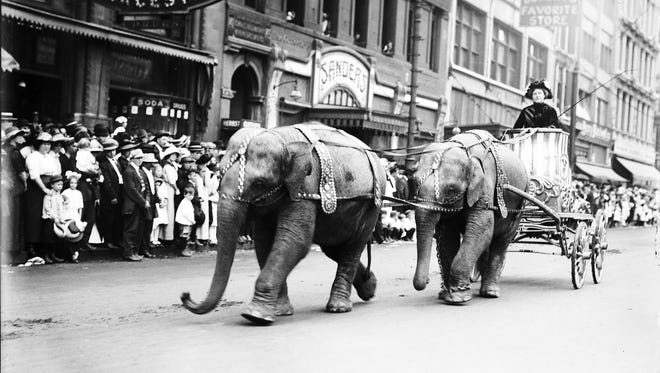
P.T. Barnum called his circus "The Greatest Show on Earth," and between the Civil War and World War II, the claim was hard to dispute. Traveling circuses were the most popular live entertainment of their day, coming to Detroit and other cities large and small. Above, young elephants pull a cart on Woodward during a circus parade in 1910.
The Detroit News Archives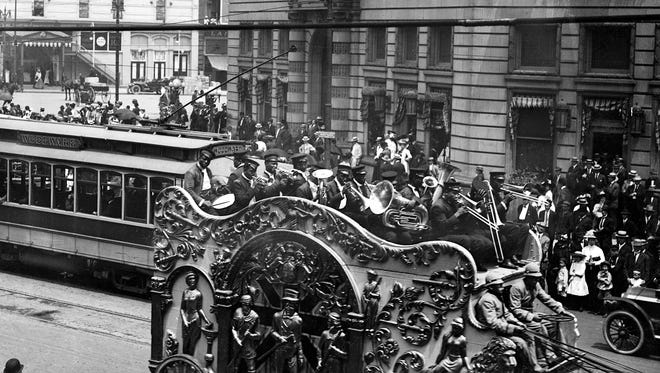
The circus band plays from the top of a fanciful carriage during a parade in Detroit in1910. The phrase "jump on the bandwagon" was coined by journalists who saw presidential candidate Zachary Taylor climbing aboard a circus bandwagon for public attention.
The Detroit News Archives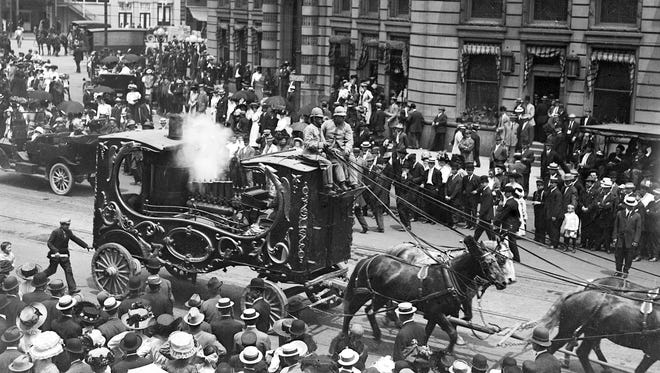
Music pumps from the whistles of a steam-powered calliope drawn by horses in the circus parade in Detroit in 1910. By 1903 there were almost 100 circuses and menageries traveling coast-to-coast. The day the circus came to town was virtually a holiday, with crowds lining the town's Main Street to watch the circus parade.
The Detroit News Archives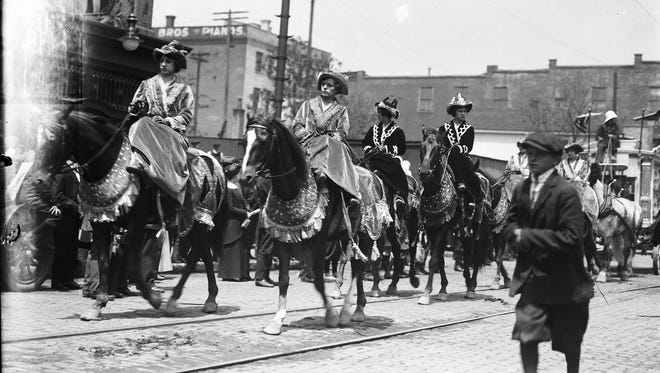
Circus employees in exotic costumes ride horses in the 1910 parade. The phrase "hold your horses" originated as a warning to local horsemen when circus elephants paraded through town.
The Detroit News Archives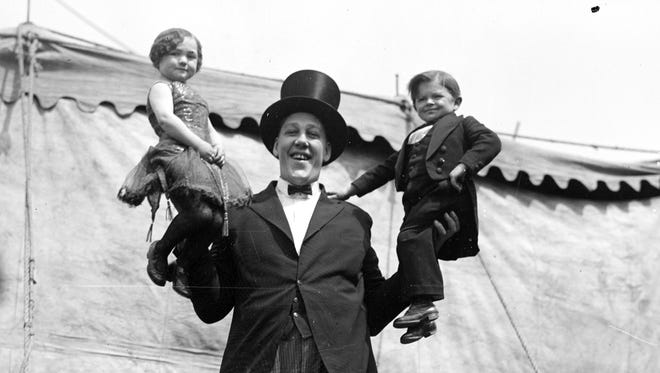
Johaan Aassen, a circus performer with the Al G. Barnes Amusement Co., holds a little person in each hand in 1923.
The Detroit News Archives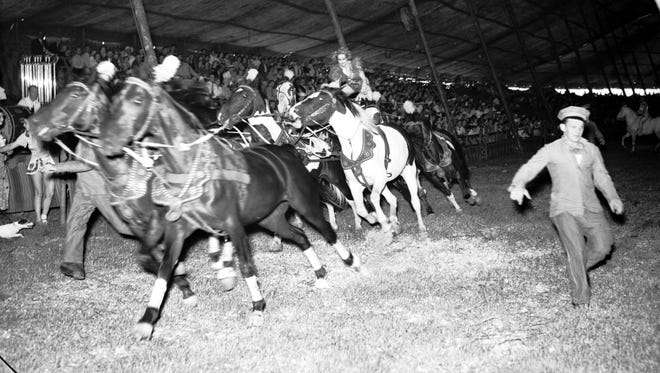
Bareback riders do their thing in the ring in a 1930 circus in Detroit.
The Detroit News Archives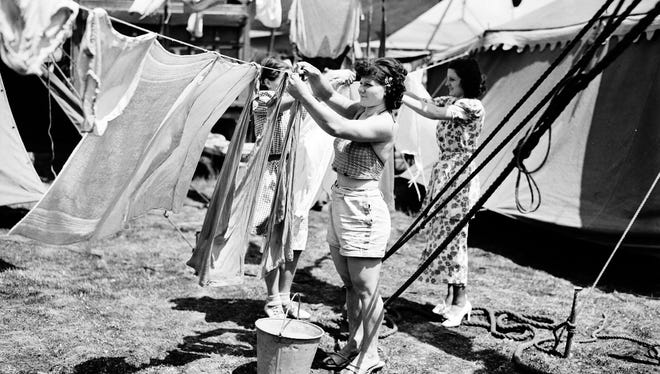
Traveling circus workers had to wash and hang-dry their own clothes and costumes, regardless of weather, mud or cramped conditions.
The Detroit News Archives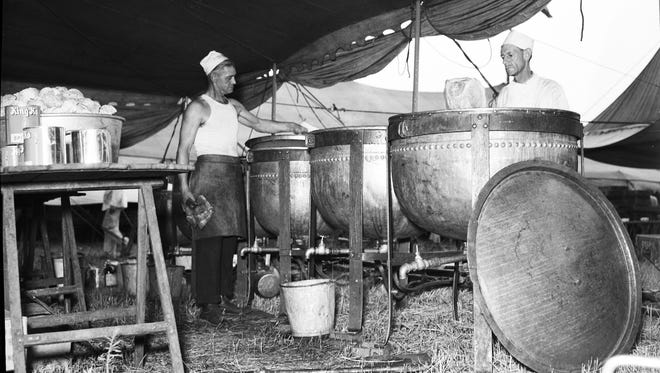
Meals for the hundreds of circus workers were cooked in large kettles.
The Detroit News Archives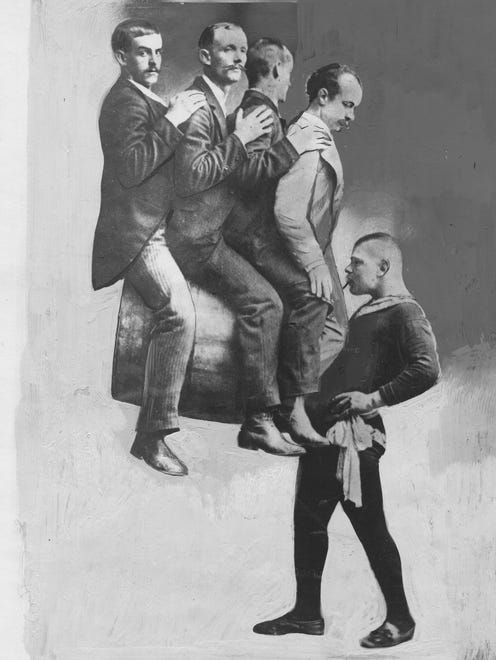
In 1934, strongman Signor Lawanda, born Hugh David Evans in Bethlehem, Pa., lifts a barrel of water with four men astride it, weighing about 1,000 pounds. With his teeth.
The Detroit News Archives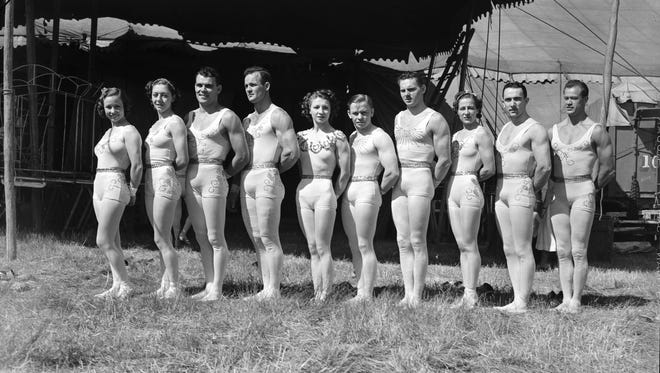
A troupe of aerialists poses for a photo in Detroit in 1930.
The Detroit News Archives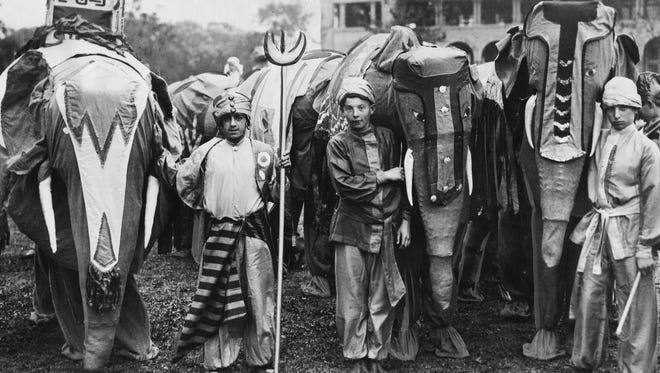
The lack of real animals didn't stop the "Recreation Detroit Circus" from staging its own exotic display on Aug. 16, 1929.
The Detroit News Archives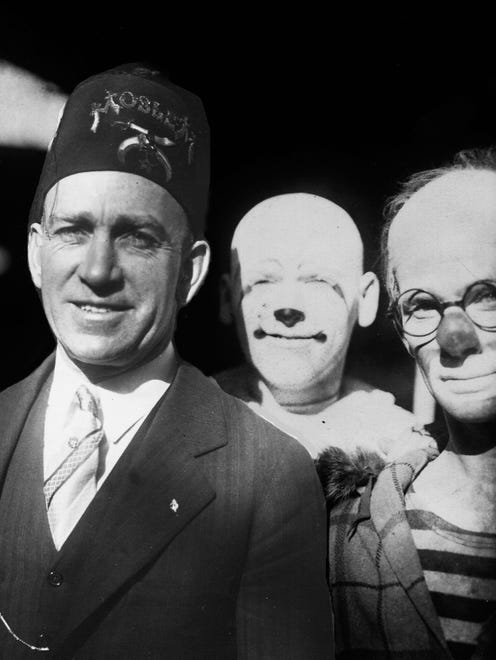
Detroit was the birthplace of the nation’s first Shrine Circus in 1906, a fundraiser for the Moslem Shrine Temple. This photo was taken in 1928.
The Detroit News Archives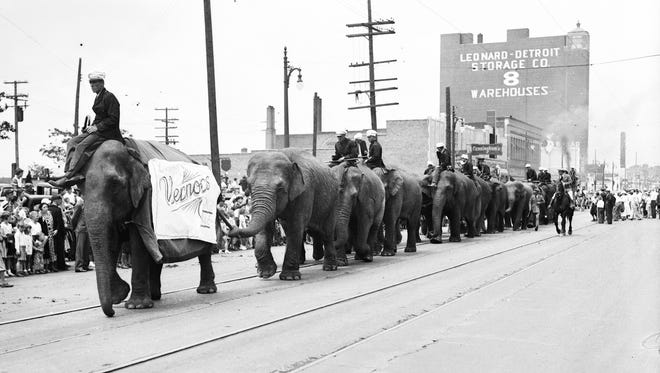
Elephants, one of them carrying a Vernor's ginger ale advertisement, parade down a Detroit street to drum up business for a circus performance in 1935,
The Detroit News Archives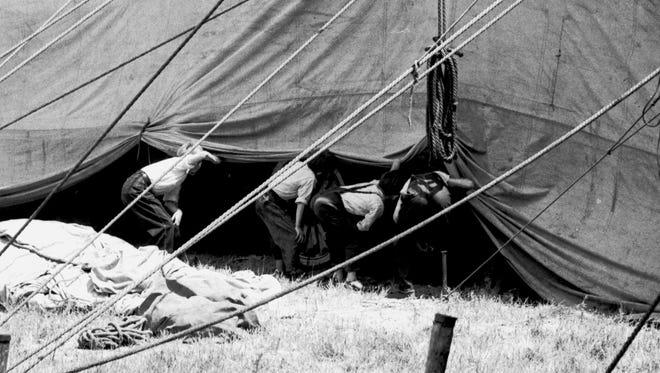
Boys peek under the Barnum & Bailey tent in 1936. Following the circus parade, the traveling troupe would usually set up their tents on an empty lot on the outskirts of town.
The Detroit News Archives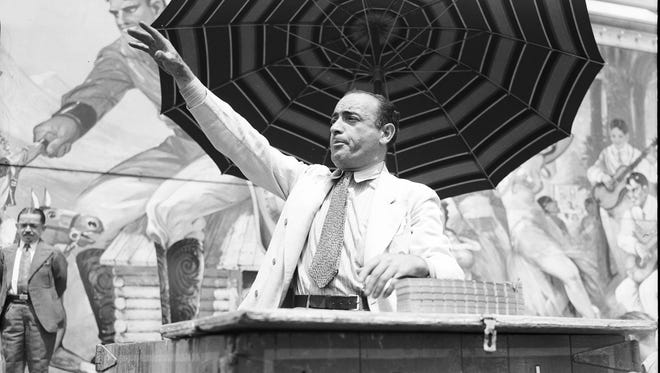
A barker urges the crowd to part with 25 cents to see a show in 1936.
The Detroit News Archives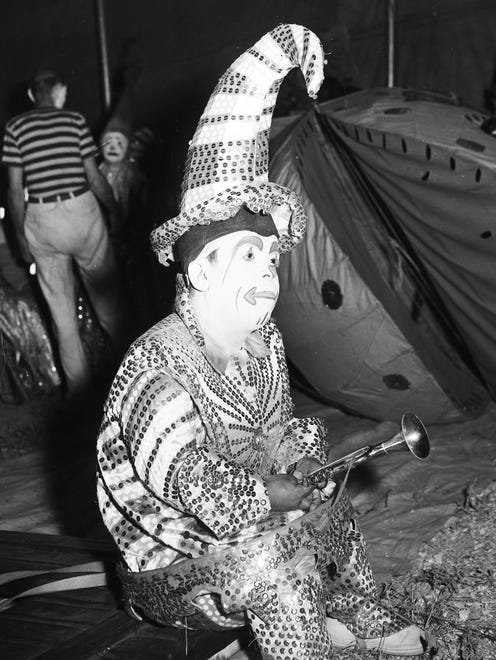
A clown takes a break offstage.
The Detroit News Archives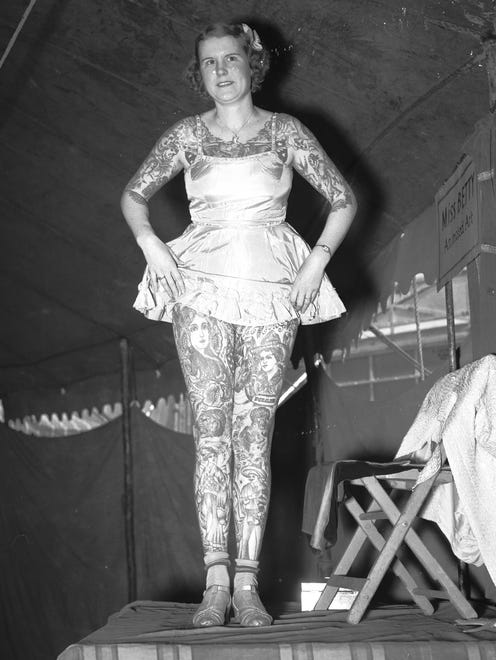
In 1936 she was Betty, the exotic Tattoo Lady. Today she would be Betty, the girl next door.
The Detroit News Archives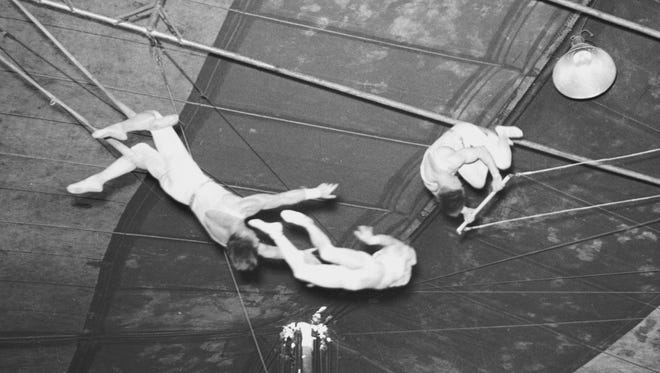
Aerialists fly on their trapeze in a 1936 Detroit performance.
The Detroit News Archives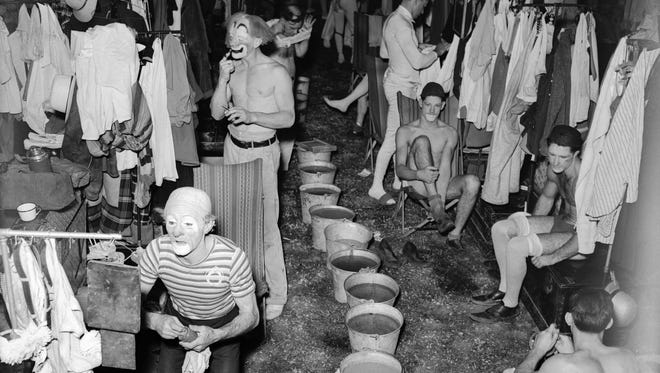
A water wagon would make the rounds around the circus lot, filling water buckets for the staff to wash in as they prepare for their next performance.
The Detroit News Archives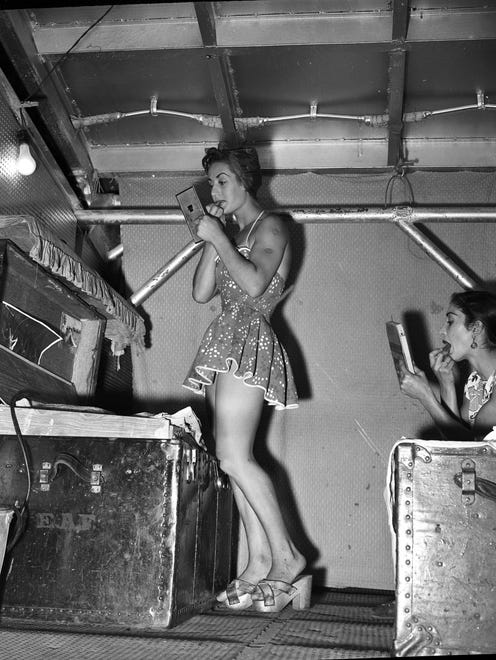
Each performer had a trunk of clothing and a small mirror.
The Detroit News Archives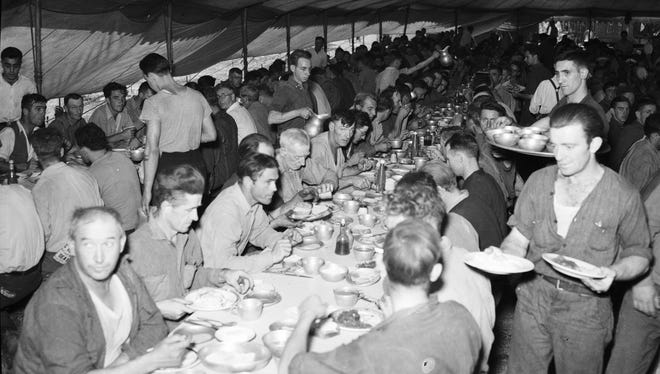
The circus staff fills a tent at mealtime.
The Detroit News Archives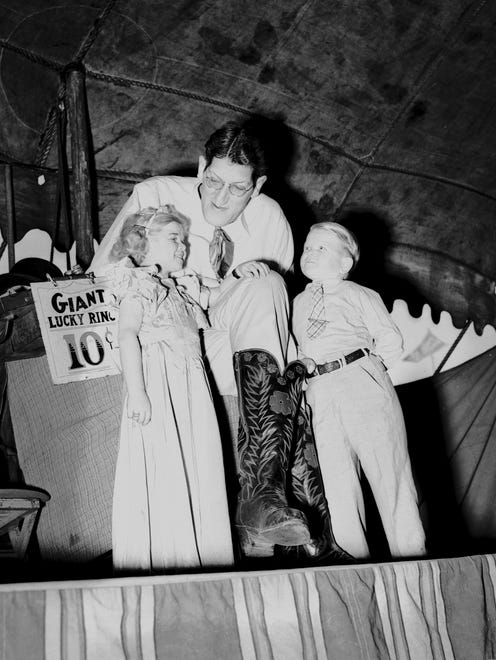
The contrast of a "giant" and little people was an audience pleaser in the 1930s.
The Detroit News Archives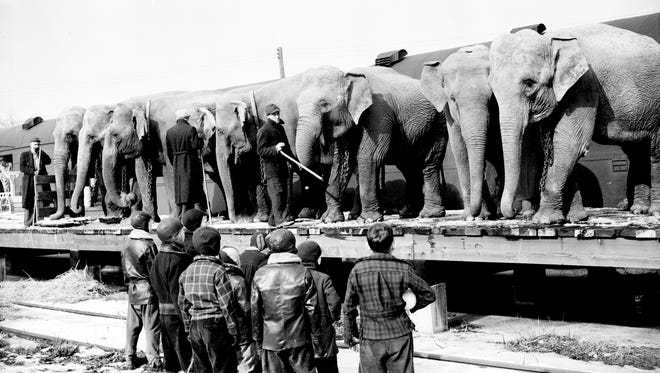
Elephants are brought from the train to a platform on Jan. 30, 1937, as a group of boys watch.
The Detroit News Archives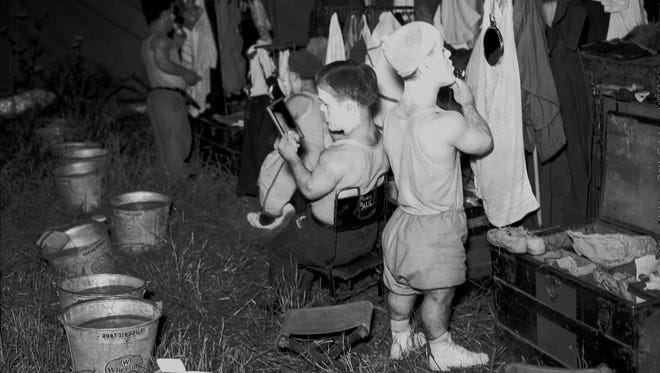
Circus performers put on makeup in a dressing area set up in a tent. The no-frills set-up includes pails of water, camp stools and trunks of clothing
The Detroit News Archives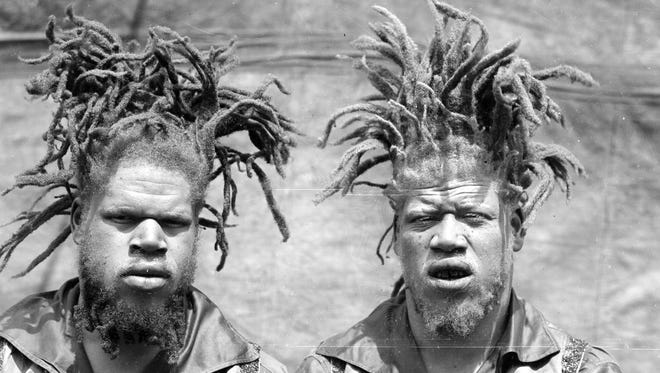
This duo was billed "The Wild Men from Borneo." Brothers Willlie and George Muse performed under the names Eko and Iko, and likely never set foot in Borneo.
The Detroit News Archives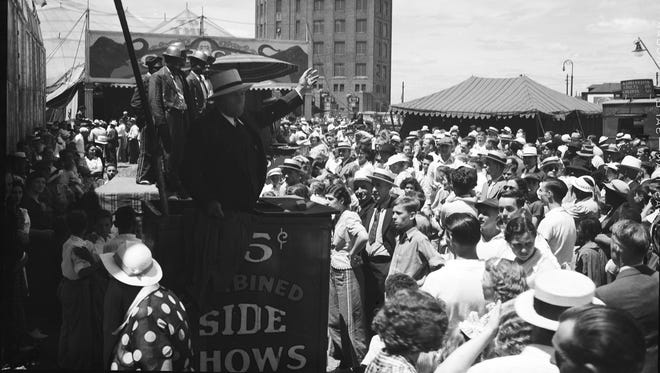
The circus grounds are packed with customers at a 1937 Detroit show.
The Detroit News Archives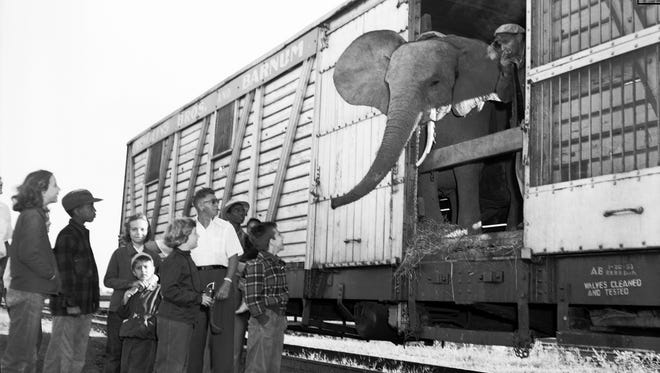
An elephant looks out of the Barnum & Bailey train at onlookers before being unloaded in Detroit in 1937.
The Detroit News Archives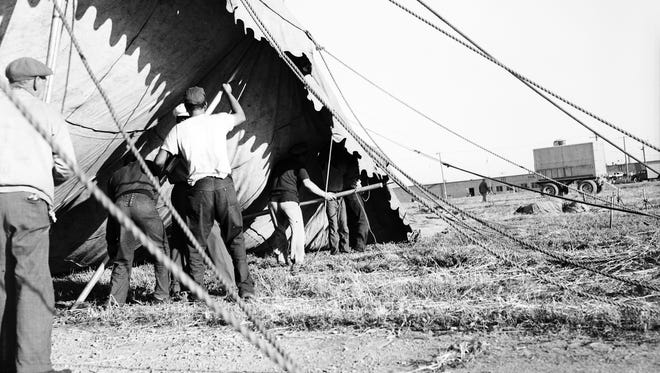
Circus workers get the poles under the canvas and prepare to raise the tent.
The Detroit News Archives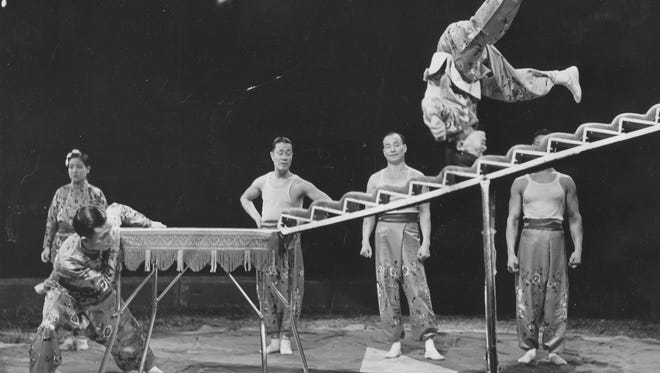
Circus acrobats perform in a 1938 Detroit show.
The Detroit News Archives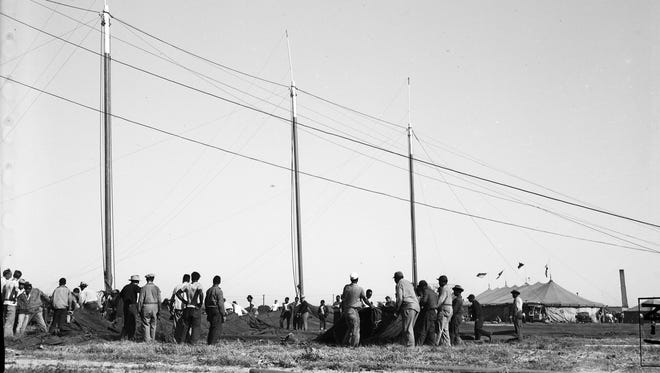
Railroad circuses often played one-day stands in up to six towns each week. Raising the Big Top takes a large crew. This example is from a 1953 Detroit stop.
The Detroit News Archives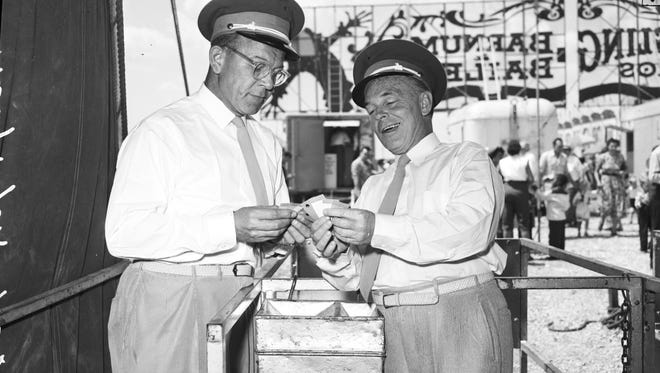
Ticket takers at the Ringling Bros. and Barnum & Bailey Circus are ready for the Detroit crowd in 1953.
The Detroit News Archives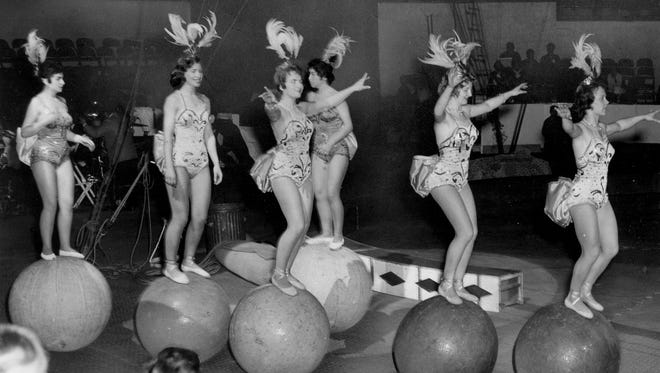
These acrobats are on the ball at the Ringling Bros. and Barnum & Bailey Circus in 1959.
The Detroit News Archives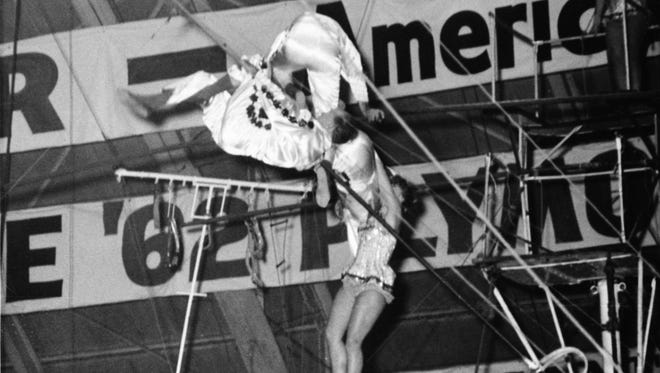
Tragedy struck in Detroit at the Shrine Circus on Jan. 30, 1962. Two members of the famed Wallenda circus family toppled to their deaths, and one fell and was paralyzed while trying to form a seven-person pyramid on the tightrope. Above, Jana Schepp, 17, and three Wallendas hold on to the high wire after the accident. Schepp dropped to an improvised net but bounced out and suffered a head injury. The others climbed back along the wire to safety.
O.C. Hansen, AP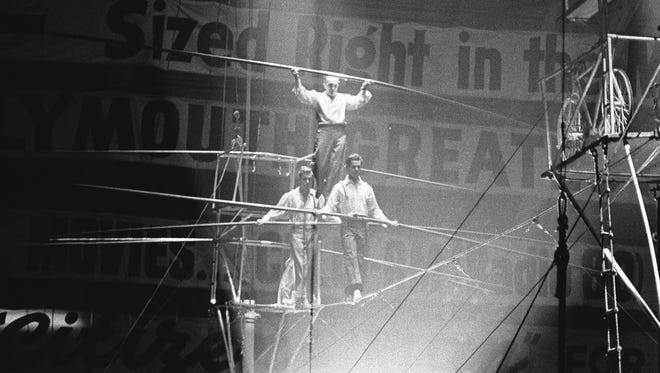
The day after the accident, in the tradition of the circus, Herman and Gunther Wallenda went back on the high wire in Detroit with Gene Mendez, 29, another famed aerialist. Topping this pyramid is Herman Wallenda, at rear is his son Gunther and leading the way is Gene Mendez.
AP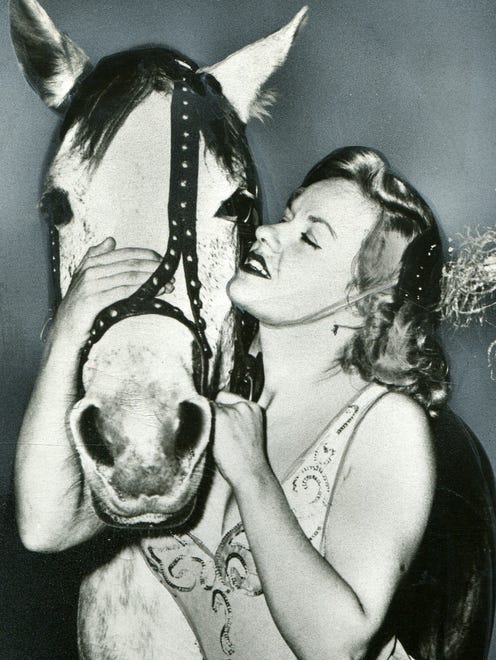
Kay Frances Hanneford, seen here in 1963, was part of a renowned European equestrian family act. The Hannefords settled in Detroit and performed in the Shrine Circus.
The Detroit News Archives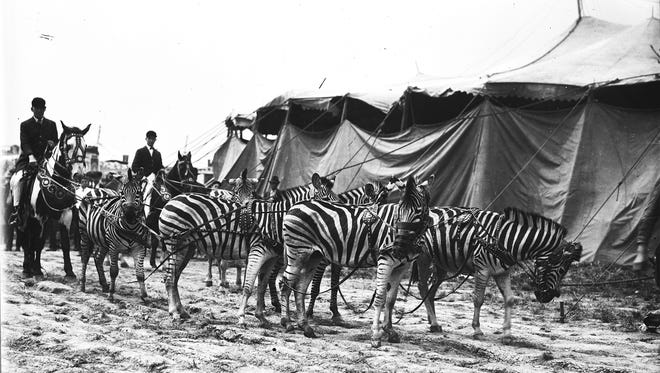
Zebras were sometimes used by 20th-century circuses, but as the years wore on, changing attitudes about animal rights and treatment contributed to the dwindling popularity of the traditional circus and the rise of more artistic, animal-free circuses.
The Detroit News Archives